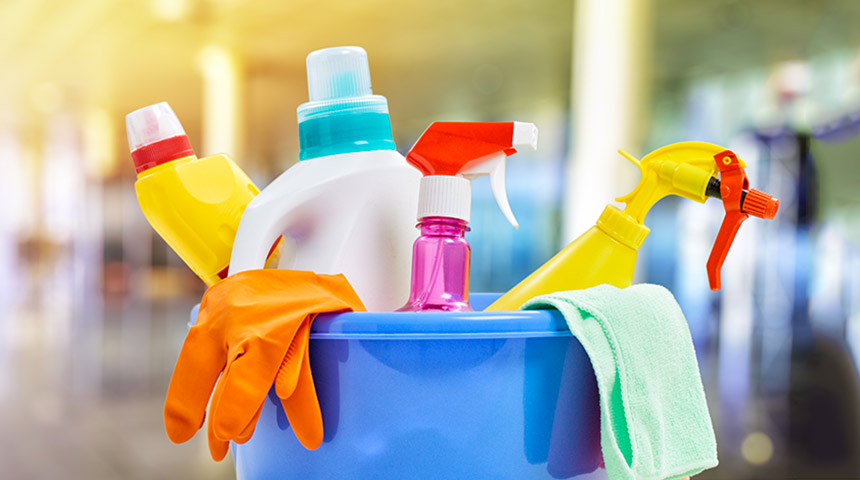ADVERTISEMENT
Chemical Detergent Poisoning: How to Protect Your Child from Poisoning with Them
Chemical detergents are essential household products that help us clean and maintain our homes. However, these cleaning agents can pose significant risks to children, especially when they are not stored or used properly. Accidental ingestion, inhalation, or skin contact with chemical detergents can result in poisoning, leading to serious health issues or even death in extreme cases. As parents or caregivers, it is crucial to take proactive steps to protect children from the dangers of chemical detergent poisoning.
In this article, we’ll discuss the risks associated with chemical detergent poisoning, symptoms to watch for, and essential safety measures you can implement to protect your child from harm.
What Is Chemical Detergent Poisoning?
Chemical detergent poisoning occurs when a child comes into contact with harmful cleaning products—either by ingestion, inhalation, or skin exposure. Most household detergents contain toxic chemicals such as bleach, ammonia, and surfactants that can irritate or damage the body’s internal organs. These chemicals can cause burns, respiratory problems, gastrointestinal issues, and even long-term health damage if exposure is not addressed quickly.
Common Causes of Chemical Detergent Poisoning in Children
- Ingestion: Children are naturally curious and may mistakenly drink or eat liquid laundry detergents, dishwashing liquids, or cleaning powders if they are not stored properly. Many of these products are brightly colored or have appealing scents, which can attract children.
- Skin Contact: Detergents and cleaning agents can cause skin irritation or burns if they come into direct contact with a child’s skin. This is especially true for products with strong chemicals such as bleach.
- Inhalation: Some cleaning products release fumes or vapors that can be harmful when inhaled. Inhalation of chemicals, especially in poorly ventilated areas, can lead to respiratory distress.
- Eye Exposure: If cleaning agents come into contact with a child’s eyes, they can cause irritation or even serious damage to the cornea.
Symptoms of Chemical Detergent Poisoning
The symptoms of poisoning from chemical detergents can vary depending on the type of product and the amount of exposure. Common symptoms include:
- Gastrointestinal Symptoms: Nausea, vomiting, abdominal pain, diarrhea, or drooling.
- Respiratory Symptoms: Difficulty breathing, coughing, wheezing, or choking.
- Skin Irritation: Redness, swelling, or burning sensations on the skin.
- Eye Irritation: Redness, tearing, or blurred vision.
- Neurological Symptoms: Drowsiness, dizziness, confusion, or seizures in severe cases.
If you notice any of these symptoms after your child has come into contact with a detergent or cleaning product, it’s important to act quickly. Seek medical attention immediately, as some chemicals can cause long-lasting damage if not treated promptly.
How to Protect Your Child from Chemical Detergent Poisoning
While the risk of chemical detergent poisoning can never be entirely eliminated, there are several practical steps you can take to reduce the likelihood of an accident happening in your home. Here are some essential safety measures:
1. Store Cleaning Products Out of Reach
The number one rule in preventing poisoning is to store chemical detergents and cleaning products in a safe place—preferably in a locked cabinet or high shelf out of the reach of children. Ensure that all cleaning products are stored in their original containers with safety seals intact. Never transfer chemicals into unlabeled containers, as this can lead to confusion and accidental ingestion.
2. Use Child-Proof Safety Locks
Install child-proof locks on cupboards and cabinets where cleaning products are stored. This extra layer of protection can prevent curious children from accessing dangerous substances.
3. Keep Products in Their Original Packaging
Always keep detergents and cleaning products in their original packaging. Many cleaning products come in brightly colored bottles or packaging with attractive designs that may seem appealing to children. The original packaging often includes safety warnings and directions for use, which can help prevent accidental misuse.
4. Teach Children About the Dangers of Cleaning Products
As your child grows older, it’s essential to educate them about the potential dangers of household cleaning products. Teach them not to touch, drink, or play with bottles of detergents. Make sure they understand that cleaning products are for adults to use, and they should never try to handle them on their own.
5. Use Non-Toxic, Child-Safe Alternatives
Consider using non-toxic, eco-friendly cleaning products in your home. There are many brands that offer safe, biodegradable detergents and cleaners that are less harmful to children and the environment. Look for products that have clear labeli
